Busting Some Indian High Speed Railway Myths

Most people have zero knowledge and ideas about how trains and railways work and operate and have even more so no idea what High Speed Rail (HSR) is, other than a vague notion of ultra-luxurious, smooth and gleaming futuristic-looking trains, expensive to build and maintain, traveling at high top speeds or something by which only the very wealthy can travel, concepts which our socialist minds are programmed to automatically reject. Not so. HSR is more advantageous and less expensive in every way than you thought. Let us see how.
The Great Indian High Speed Rail Dream – Part 5
Most allegations being raised against the HSR are only myths springing from misconceptions, propaganda, ignorance on how rail technology (and economics) work, and of course, comparisons with our existing railway systems. Like mentioned in another chapter, our brains simply cannot grasp the idea of a high speed train, because thanks to our outdated educational systems, our minds are not molded or trained to think imaginatively or out-of-the box, taking into account data and proof, but only in straight, “facts by heart” question-and-answer way within a set boundary, resulting in anti-HSR half-baked truths and sensationalist myths flying around faster and thicker than a TGV, most of which can be disproved if people just sit down, take some facts into account, and think. This chapter tries to debunk some of those said myths.
MISCONCEPTION: High Speed Trains are Limited Capacity Luxury Items
Most people in India believe that high speed trains are something like private jets on rails. Opulent, super luxurious, exclusive, catering to a limited, niche class of very wealthy people. This is mainly because of limitations in our imaginative and reasoning capabilities: We Indians always tend to think about new ideas through the filter of various preconceived notions using a set of comparative reference points (yes, “look at Sharmaji’s son!” types) to almost always reach an unfavorable verdict. In this case, the preconception is the subconscious perceptual of ordered, clean, polished and shiny surfaces and the reference point is the existing Indian Railways system. Simply put, “shiny” or sanitized things are perceived of being used by rich people (planes, latest cars, AC buses, corporate offices, glitzy malls and apartments etc) while the poorer sections are relegated to unsanitized, chaotic, dusty, dented and rough stuff (old vehicles, RTC buses, dingy govt offices, kirana shops, crowded old houses). We will see more examples of this peculiar sociological thought process in later chapters.
So in this case, it is natural for us to think that those shiny, glamorous-looking high speed trains are meant to be used by the rich only. However, nothing like that. The “highly polished, shiny” futuristic looks of these trains are a technological requirement – aerodynamics – to reduce drag (wind resistance) as much as possible. The interiors of the trains do not matter. They can be outfitted like our suburban local trains if we want to! Yes, European HSTs (TGV, Eurostar, Thalys, ICE, Pendolinos etc) boast of very plush interiors featuring designer seats, fancy bars, and nice lighting, only because the market demands that; Europeans want more comfort and luxury. Japan and China however are a different story. People in Japan use their Shinkansen Bullet Trains to commute to office every day just like we take the Virar fast local, making capacity and functionality more important than luxury. As a result, Japanese trains have interiors very utilitarian and basic, sometimes not even as opulent as our Shatabdis! We can have all classes of people using them. They will be understandably expensive, but not as expensive as they are made out to be. More about this will be discussed in the next chapter.
Above: Interiors of a Thalys PBA and a TGV-Reseau | Below: Interiors of Shinkansen N700 and 500 series.
Another thing is carrying capacity. People look at our long, heavy, clattering, never-ending trains and conclude that long trains cannot run at high speeds and hence high speed trains should be short. And they are, in Europe. The TGV models, ICE, Pendolinos all have usually only upto 8 passenger carrying cars, and the Amtrak Acela only six, with capacity usually averaging at around 400 passengers. But in Japan, Shinkansen trains are regularly up to 16 coaches long and can seat upto 1323 passengers in the 700 and N700 series! 1300 is the number of people our high-capacity Garib Rath trains can carry (78 seats x 16 coaches)! And they can run at 300 kph with this load! This is because unlike our trains which are solely powered by a locomotive (or the traction motors attached to the axles of the locomotive), a high-speed trainset has all its axles of all its coaches powered (except one or two), or it has motors attached to all wheels of the coach, all simultaneously working to move the train, or simply, all coaches are locomotives or engines in themselves! This is also the fact that will bust the next myth.
In short, high speed trains can be as long as and similarly outfitted as our Shatabdis and still run at 300 kph.
MYTH: High Speed Trains Must Run Nonstop End to End
This takes off from the previous misconception created by “image” and and the ignorance about how train systems work. Almost everyone believes that high speed trains will fail in India because of the numerous cities and towns in our highly populated country, all filled with potential riders, will entail frequent stoppages for trains, thereby slowing them down and defeating the very purpose of a high speed train.
To be honest, I was also under this impression that high speed trains should not have stoppages between its termini, thinking that stops would eat into the train’s running time. The truth is that stoppages do not matter for Bullet Trains because of the technology used in them. Check this out. The most heavily traveled high speed rail route in the world is the Tokaido Shinkansen of JR Central running 515 km from Tokyo to Shin-Osaka (Delhi-Lucknow distance). The fastest Bullet Train on the route, the Nozomi Super Express has 4 stops, the first two of which fall in the first 30 km, a stop every 128 km on average. And it still takes only 2 hours and 24 minutes to cover its 515 km distance, clocking an average speed of 218 kph and top speed of 300 kph! There is even a “Passenger Bullet Train” on this route, the Kodama, which stops at every station on the way – 15 of them, or a stop every 34 km – and still manages an average speed of 128 kph in 4 hours and 4 minutes! This is because of the mind- farting acceleration powers these trains have. The N700 Series trainset which runs the Tokaido Shinkansen has an accelerating power of 2.6 kilometers per hour per second – or it takes only less than 2 minutes to accelerate from 0 to 200 kph!! This is thanks to the little technical detail we saw in the last part: all-wheel power, which results in stoppages not affecting them, With such superpowers, saying stoppages will slow down Bullet Trains is like saying pedestrians will slow down Indian drivers. Yes, Bullet Trains will have a rocking time in Kerala where even the Rajdhani stops 7 times in 500 km.
This notion of ours that stoppages will drastically slow down trains is because again, of that reference point of ours: we have only seen our trains which take forever to accelerate and decelerate (~10 min to reach 100 kph) and where we have seen stoppages being the bane of the existence of our trains with each halt increasing running times, resulting in our obsession with “nonstop” and it being equated with great speed, right from the inaugural Rajdhani to the Yuvas and Sampark Krantis and Durontos but all of which fell flat eventually.
MYTHS About Land, Environment, Deforestation and So On
A properly fenced High Speed Rail does not require a lot of land at all. It only needs as much land in width as a regular double track railway line requires. We had covered this in good detail in a previous chapter. For now, close your eyes and imagine a six-lane highway (with service roads) and a double-track railway line. Which needs more land for its right of way? Railway lines require only around 20% of land in width compared to a highway. But the actual highway is not what consumes the most land, it is all those supporting structures that do, the complicated, land-eating interchanges and overpasses every 30 km, rest and fuel stations, service roads and other associated paraphernalia. On an average, a 6-lane highway occupies around 80 meters of land and upto a kilometer across at interchanges! And for rail lines, 20 meters of land for 2 lines of track is all that is required, yes, even for high speed lines! And if it is constructed on elevated tracks, it will not require any land at all. And the Indian HSR is mostly going to be elevated. But this “HSR eats up land” is not even the most laughable myth.
There has been this enduring myth/urban legend that trains are bad for the environment. This is so wrong that that it is not just wrong but “athukkum mele“. This argument is not leveled just against HSR but against railways in general by everyone from clueless commentators to even governments who for some hare-brained reason believe that trains are polluting and bad for the environment and favor roads instead! How spectacularly stupid! Is a railway line that will replace thousands of diesel-belching, iron-ore laden trucks, and their dust and pollution, stuck for kilometers in the Yellapura Ghats of the ecologically sensitive Western Ghats with a couple of WAG9s better for the environment than the road? Apparently not it seems for crying out loud!
If there is anything that trains do, it is reducing pollution! Do we have to repeat the trope that a single train will replace 500 cars or hundreds of trucks (and their emissions), a thousand people and tens of thousands of cargo transported at negligible emissions, who and all of which would else be burning fossil fuels, belching out CO2, CO, NOx and other such delicious juices into the atmosphere?
Yes, forests have to be cleared for railway lines to be built though them. And for highways they have to be cleared 5 times as much and affect them infinitely more in terms of emissions. Oh trains are noisy and disturb animals you say? You mean to say noise from a train passing once every hour, at decibels lesser than that of a single truck, is worse than a static wall of continuously roaring high-decibel highway traffic noise? Oh yes, these people must think trains all still run on steam and diesel. Someone take them out and show them some electric trains, please. Modern trains are the greenest methods of transportation ever devised which do not have emissions themselves while reducing third party emissions as well! And high speed trains are specifically what is needed to clean the earth up from all the muck produced by automobiles and airplanes.
The best thing to do is to politely inform the public. Addicting Trains
Posted by Addicting Trains on Sunday, 19 July 2015
MYTH: High Speed Rail will Split Lands Into Two!
If there is a Nobel prize for ignorance, this exhibit will be a sure shot entry. This particular sentence has been the counter-point to not just high-speed rail but also express highways for a long time now. Reasoning like this is the result of people over-analyzing one fact and jumping to conclusions without even looking at any other angles. Yes, it is indeed true that you cannot cross high speed rail lines or expressways on grade as they will not have level crossings and will be fenced. OH NO! I WILL NEVER SEE MY GIRLFRIEND ON THE OTHER SIDE OF THE LINE AGAIN!! THIS IS A BERLIN WALL OF NEO-LIBERAL IMPERIALISM!!
Calm down and think. If this was the case, France with all its TGV lines would’ve been split into some 25 countries long ago. USA with all its uncrossable Interstates would’ve been shredded into hellish pockets of inbreeding and stagnant water. It turns out that you can indeed cross these forbidding lines of transportation control because they will not be built at grade, or on level with where we lowly humans tread. Except while passing through low-population areas, HSR lines will almost always be built above grade on pillars or on embankments with underpasses built every 50 meters or so in trenches with bridges for people and animals to pass, or underground in tunnels. This is not just to facilitate people movement but more importantly to safeguard the trains themselves from dumb humans or animals straying onto the lines, even if they are fenced. So to quell the fears of the American right-winger and his Indian ideological opposite alike, no, this is no Berlin Wall and your cattle will not be affected, you can always graze them on the other side of the line too! Neither will you lose your land on the other side of the line for all of eternity. They will also give you good money for your land where they are erecting pillars.

In fact, it will be much easier crossing the HSR line than crossing the Bangalore Outer Ring Road.
MYTH: India is Prioritizing HSR (Bullet Trains) over Conventional Trains
When you prioritize something, you devote your time, money and resources towards it in preference above other things. So, if India were to prioritize HSR over its “normal” Indian Railways trains, it would mean Indian government diverting funds, manpower and other resources from its normal operations towards building the Bullet train. However, there is no question of “choosing” between the two because Indian Railways is NOT building the Mumbai – Ahmedabad “Bullet” train! It will be constructed completely independent of Indian Railways and the government by a SPV company, though fully owned by the Government of India. The money is supplied by Japan, technology is supplied by Japan, and manpower will come from various sources, including new hiring and from IR.
And if you haven’t noticed, Indian Railways is a on a massive modernization drive. Most people seem to be unaware of the transformation efforts initiated in Indian Railways including huge infusion of funds, large-scale line decongestion initiatives, Dedicated Freight Corridors, humongous energy conservation initiatives, online tendering of all contracts, a slew of IT initiatives in ticketing and accounting reforms etc., rolling stock optimization, massive locomotive projects, induction of modern trainsets, station redevelopment, GMs, DRMs and even the RM himself are taking to Twitter to help passengers and not the least, improving train and toilet design, in addition to escalators, WiFi in stations and trains, cleanliness drives, pan-India helpline numbers and so on. Oh and have you noticed IRCTC’s website performance recently? The only thing that seems to have stopped are the jokes.
In fact, there has been a massive change in culture in how the Railway Ministry itself works. It will take some time for effects of most of these measures to show up. And High Speed Rail will NOT affect or interfere with any of these in any way as both are completely different. In fact, the HSR will only expedite IR development!
Development of Indian Railways will happen simultaneously or in parallel or along with the building of the Bullet Train. There is no prioritization of anything. Conventional railways and high speed railways are two systems completely independent of each other and will be developed without interfering with each other. At the same time. Unfortunately, thanks to our conditioning as a result of decades of “planned”, linear, one-after-the other processes of development (change), our brains seem to be unable to grasp the concept of multiple processes of change happening in parallel at the same time. Get over it, this is 2015 not 1972! These things can be done.
So, high speed or Bullet Trains can indeed accommodate a thousand people, have multiple stops and run at 300 kph covering 500 kilometers in 2 hours, while requiring minimum amount of land and without affecting people and animals in its wake, while development of Indian Railways will go on unhindered. But all this comes at a cost, of course. How costly is that cost? We will see in the next chapter.
Other Chapters on High Speed Rail
What are High Speed Railways or “Bullet Trains”?
Advantages of High Speed Railways in an Indian Context
Environmental Benefits of High Speed Rail
How HSR Will Economically Transform India
Shouldn’t We Improve/Run Fast Trains on our Existing Network First?






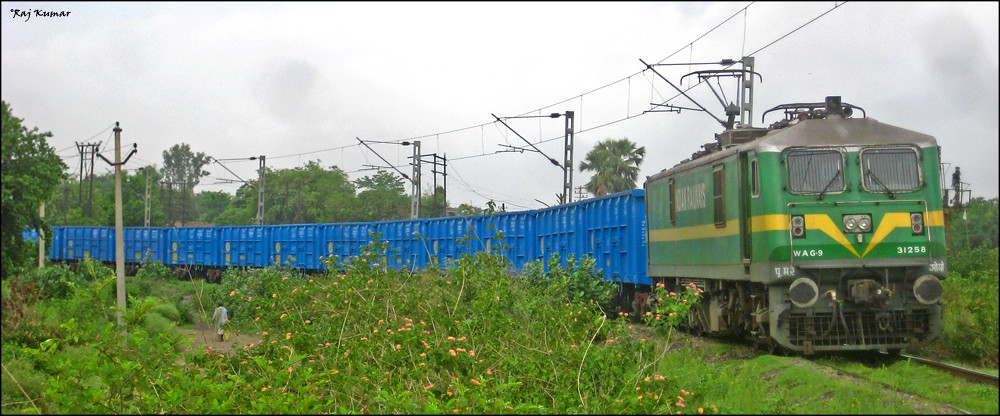
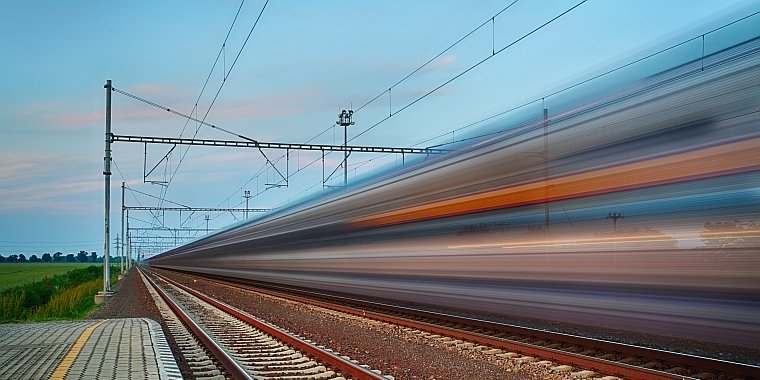
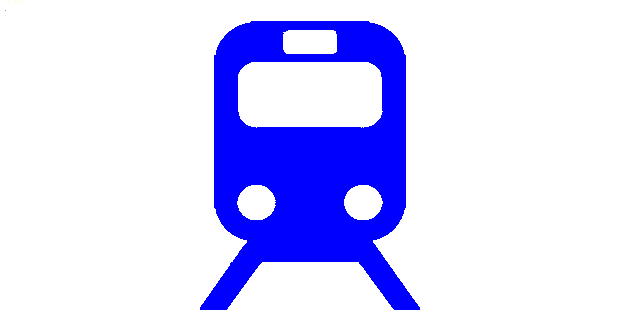
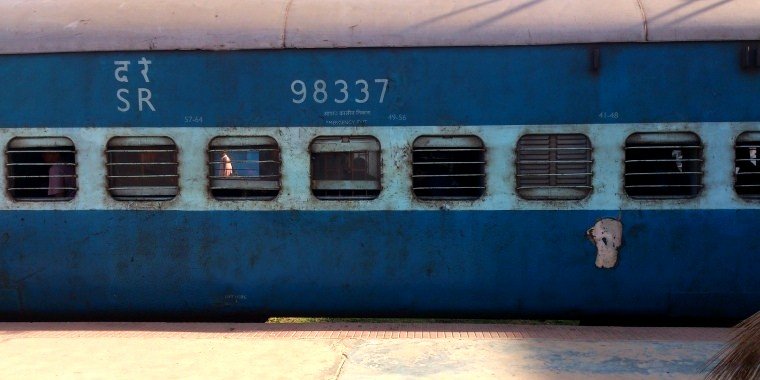
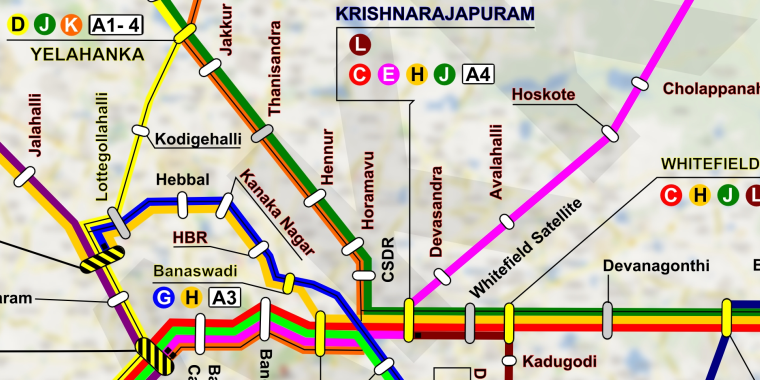
Nice Article! It should be read by more and more people!
The business class is often perceived to be the target market of bullet trains, but the venture may lose out on a lot of customers if they ignore the tourist class. These people are large in number, do not have as much money to spend on travelling, but collectively can boost not just railway income, but also that of the tourist industry. Our trains, bar the Rajdhanis, Shatabdis and a few Durontos, and very few regular Express/SF trains, are tourist-hostile. All-day journeys, excessive delays, poor sanitation and inadequate safety and security push most tourists towards planes and even buses. Bullet trains can do this sector a lot of good. The Madrid-Barcelona AVE is one such example of a bullet train that helps tourists as well as business travellers.
Capacity is often an overrated factor in determining what suits our railway network best. The Japanese designed their Shinkansens for high capacity, and the dimensions show- very long coaches, width as much as our stock. European units have shorter coaches (at least the articulated ones) which are also narrower in width. The same machines in China and Russia are wider and hold more passengers- the Velaro, Pendolino and Desiro are clear examples. If Alstom can build an AGV or Pendolino that can carry as many passengers as the Delhi-Bhopal Shatabdi, the way they built the KTX-I and the CRH5, they can get the contract.
One ‘myth’ that won’t be busted so easily is whether bullet train journeys during the day serve any purpose across a distance over 1000km. We are getting Shinkansen technology for the first line, and possibly more lines. The Nozomi service from Tokyo to Hakata covers a distance of 1100km, in five and a half hours- and that’s not much faster than a flight and connecting journeys, but costs a fortune. Much as there’s a TGV and AVE from Paris to Barcelona, the cost and time make flying the smarter option. A Mumbai-Delhi trip can take over seven hours and cost as much as a full-service flight without a coupon or offer. The Chinese often struggle to fill seats in their G-series trains, except along the Beijing-Shanghai route, and often have bullet trains running overnight, although those are too expensive for the general public. Filling seats in India will be harder, unless they sort out capacity and costing. We are still years away from maglev connectivity, and even the pioneers of high-speed rail can’t yet afford to take it very far ahead.
While this isn’t really a myth, but a possibility, that of building Diamond Quadrilateral High-Speed rail lines and linking them with conventional lines may be looked into. These services can then be used exclusively by the Rajdhani class of pan-India trains, to reduce journey times to 11 hours from Delhi to Mumbai/Kolkata and 18 hours from Delhi to Chennai or Mumbai to Kolkata. While the general consensus is to keep the HSR separate from conventional rail, the Rajdhani class can make use of this route wherever possible. This can work much like true interstate highways, with their entry and exit routes. While the Rajdhanis can rip across the country’s longest routes with ease, the regular trains also get more track space and less signals to wait for high-priority trains to get across.
Well written. But convincing a society which is politically (de)motivated would be a tough task. Opposing everything which potentially might prove beneficial to us is what we are good at, and what we had been doing since ages.